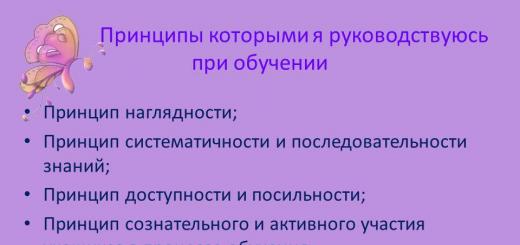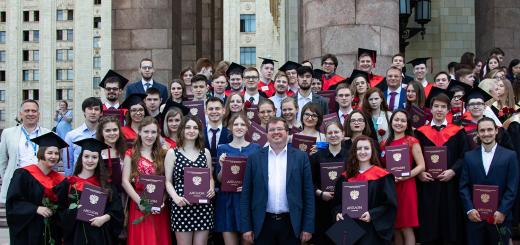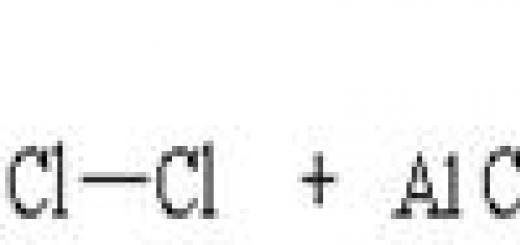Slide 2
First hit
Leningrad-Novgorod operation (January-February 1944).
The goal is the defeat of the German group near Leningrad and Novgorod.
Having broken through the powerful long-term enemy defenses on a 300-km front, Soviet troops defeated the 18th and partly the 16th German armies of Army Group North and advanced 270 km by February 29.
Slide 3
As a result of the successful implementation of the first strike, the blockade of Leningrad was completely eliminated and the Leningrad region was liberated. Favorable conditions were created for the liberation of the Baltic states and the defeat of the enemy in Karelia.
Slide 4
Second strike
Dnieper-Carpathian operation (February-March 1944).
The goal is the liberation of Right Bank Ukraine.
As a result, a group of Germans (10 divisions) in the Korsun-Shevchenkovsky area was destroyed.
At the height of the spring thaw, a large-scale offensive was launched.
This was so unexpected for the Germans that, fleeing for their lives, they abandoned their equipment and weapons due to the impassability of the roads, and retreated across the river. Bug and Dniester
Slide 5
Right Bank Ukraine was liberated from the enemy. Soviet troops entered the territory of Moldova, and on March 26 they reached the border with Romania.
Slide 6
Third strike
The goal is the defeat of the enemy’s coastal group between the Southern Bug and Dniester rivers, the liberation of the northwestern coast of the Black Sea, including the port city of Odessa and access to the state border of the USSR with Romania.
Slide 7
The goal is the liberation of Crimea.
The Crimean operation ended in the complete defeat of the 17th German Army, whose irretrievable losses during the fighting alone amounted to 120 thousand people (of which 61,580 were prisoners).
Slide 8
As a result, the threat to the southern wing of the Soviet-German front was removed, and the main naval base of the Black Sea Fleet, Sevastopol, was returned.
Slide 9
Fourth strike
The goal is to support the Allied landing of the Anglo-American landing force across the English Channel.
450 thousand Soviet troops were involved.
The “Mannerheim Line” was broken, the cities of Vyborg, Petrozavodsk and most of the Karelo-Finnish SSR were liberated. The defeat forced the Finnish government to withdraw from the war.
Slide 10
Fifth strike
The goal is the liberation of Belarus. One of the largest military operations in the history of mankind.
On the Soviet side, 1 million 200 thousand people took part in the operation (excluding rear units).
On the German side - as part of Army Group Center - 850-900 thousand people (including approximately 400 thousand in the rear units).
Alexey Antonov, Deputy Chief of the General Staff of the Red Army, leading developer of the operation plan.
Slide 11
The Byelorussian SSR, most of the Lithuanian SSR and a significant part of Poland were liberated. Soviet troops crossed the Neman, reached the Vistula and directly to the borders of Germany - East Prussia.
East of Minsk, 30 enemy divisions were surrounded and destroyed. The German Army Group Center was almost completely destroyed.
Slide 12
Sixth strike
The goal is the liberation of Western Ukraine and the occupation of South-Eastern Poland.
Western Ukraine was liberated, the Vistula was crossed and a powerful bridgehead was created west of the city of Sandomierz.
32 divisions of German troops (including the division of Ukrainian SS collaborators "Galicia") lost from 50 to 70 percent of their strength, and 8 divisions were completely destroyed.
Slide 13
Seventh Strike
The goal is the defeat of a large German-Romanian group covering the Balkan direction, the liberation of Moldova and the withdrawal of Romania from the war.
Slide 14
The Moldavian SSR was liberated. Then, within the framework of the Romanian operation, support was provided for the anti-fascist uprising in Romania on August 23.
34 Soviet divisions remained to destroy the encircled Chisinau enemy group, and 50 divisions - mainly from the 3rd Ukrainian Front - crossed the border of Romania, occupied the port of Constanta, Ploiesti and a number of other cities and liberated significant Romanian territories. The incident disabled Germany's allies - Romania and Bulgaria and opened the way for Soviet troops to Hungary and the Balkans.
Slide 15
Eighth strike
The goal is the liberation of Estonia, Latvia and Lithuania from German troops
The operation lasted 71 days, the width of the front reached 1000 km, and the depth - 400 km.
As a result of the Baltic operation they were defeated.
26 divisions of Army Group North and 3 divisions were completely destroyed. The remaining divisions are blocked in Courland.
Slide 16
During the operation, 112 soldiers of the Red Army were awarded the title of Hero of the Soviet Union, three of them twice, over 332 thousand people. were awarded medals and orders.
Slide 17
Ninth strike
The goal is to provide assistance to the Slovak uprising.
On October 6, the 1st Czechoslovak Army Corps, having captured the Duklinsky Pass together with Soviet troops, entered its native land, liberating the village of Vysny Komarnik.
Slide 18
Belgrade operation (October-December 1944)
As a result of the Belgrade operation, Army Group Serbia was defeated, the front of Army Group F was pushed north by more than 200 km. Favorable conditions were created for the Budapest operation.
Slide 19
Tenth strike
Offensive combat operations of the troops of the Karelian Front and the Northern Fleet of the USSR Navy against the Wehrmacht troops in northern Finland in the Petsamo region and northern Norway from October 7 to November 1, 1944.
Slide 20
The Soviet Arctic was liberated, the threat to the port of Murmansk was eliminated, enemy troops in Northern Finland were defeated, the Pechenga region was liberated, and the city of Petsamo (Pechenga) was taken. Soviet troops entered Northern Norway.
Slide 21
- As a result of these “Ten Stalinist Strikes,” almost the entire territory of the USSR was liberated from the invaders.
- 136 enemy divisions were defeated and liquidated, of which 70 were surrounded and destroyed.
- Romania, Finland and Bulgaria went over to the side of the anti-Hitler coalition.
- The successes of 1944 predetermined the final defeat of Nazi Germany in 1945.
Slide 22
Resources used
- N.G.Georgieva, V.A.Georgiev History of Russia - M, Moscow State University, Perspektiva publishing house, 2009
- Contemporary history of Russia. Textbook. – Edited by A.N. Sakharov, M., Prospekt publishing house, 2012
View all slides
Ten Stalinist blows - the general name of the series
largest
offensive strategic operations in the Great
Patriotic War, carried out in 1944
year by the armed forces of the USSR.
Initially, this series of operations was not united under
general name, operations were planned and
were carried out based on the logic of events and general
strategic objectives for this year. For the first time ten
blows were listed by I.V. Stalin in the first
parts of the report “27th anniversary of the Great October Revolution”
socialist revolution" dated November 6, 1944
at the ceremonial meeting of the Moscow Council
workers' deputies.
I - Leningrad-Novgorod operation
Fronts:Volkhovsky - K. A. Meretskov
2nd Baltic - M. M. Popov
Dates –
January–February 1944
During the Leningrad-Novgorod
operations of the troops of three Soviet
fronts inflicted heavy defeat
German 18th and 16th armies,
knocking back the enemy 220-280
kilometers from Leningrad, and
south of Lake Ilmen - 180
kilometers.
In January
troops of Leningrad and Volkhov
fronts, knocking out the enemy from
positions that he occupied more than
two years, completely released
Leningrad from the enemy blockade. Soviet soldiers fight in
city of Pushkin, January 21, 1944
II – Dnieper – Carpathian operation
Fronts:3rd Ukrainian - R. Ya. Malinovsky
Dates –
January–March 1944
The Dnieper-Carpathian operation is one of the largest battles
The Great Patriotic War, both in its scope (troops participated in it
five Soviet fronts and two German army groups; in total about
4 million soldiers on both sides) and in its duration (3
month). This is the only operation in which all 6 Soviet troops attacked.
tank armies. As a result of the operation, German troops suffered serious
defeat
Soviet troops on a front of 1,400 kilometers advanced west from 250 to 450
kilometers, liberated the vast territory of Ukraine with a population of tens
million people and important economic areas. Soviet troops left
to the state border of the USSR, beginning the liberation of Romania. Were created
conditions for the liberation of all Central and South-Eastern Europe.
Korsun-Shevchenko operation
Fronts:1st Ukrainian - N. F. Vatutin
2nd Ukrainian - I. S. Konev
Dates –
January–February 1944
Liberation
territories on
Pravoberezhnaya
Ukraine to the south
Kyiv
III – Crimean operation
Fronts:4th Ukrainian Front F. I. Tolbukhin
Dates –
April - May 1944
the threat to the southern wing has been removed
over the Black Sea, which is sharp
undermined Germany's position in
Romania, Turkey, Bulgaria.
III – Odessa operation
Fronts:3rd Ukrainian Front Malinovsky
Dates –
March - April 1944
Defeat of the enemy coastal group
between the rivers Southern Bug and Dniester,
liberation of the northwestern
coast of the Black Sea, including the port city of Odessa and access to
state line
borders of the USSR with Romania.
IV – Vyborg-Petrozavodsk operation
Fronts:Leningradsky - L. A. Govorov
Karelsky - K. A. Meretskov
Dates – June –
August 1944
Liberation
Karelian
isthmus, Karelia
and exit from the war
Finland
V – Belarusian (“Bagration”) operation
Fronts:1st Belarusian - K.K. Rokossovsky
2nd Belorussian - G.F. Zakharov
3rd Belorussian – I.D. Chernyakhovsky
1st Baltic - Bagramyan
Dates –
June–August 1944
The success of Operation Bagration significantly exceeded Soviet expectations
command. As a result of the two-month offensive, there was complete
Belarus liberated, part of the Baltic recaptured, liberated
eastern regions of Poland. In general, on a front of 1100 km there were
advancement to a depth of 600 km has been achieved. In addition, the operation
endangered Army Group North in the Baltics.
Operation Bagration is a triumph of Soviet military theory
art thanks to a well-coordinated offensive
movement of all fronts and the disinformation operation carried out
enemy about the location of the general offensive that began in the summer of 1944
of the year.
VI – Lviv-Sandomierz operation
Fronts:Dates –
July–August 1944
The Crimean operation was completed
defeat of the 17th German Army. IN
as a result of the liberation of Crimea was
the threat to the southern wing has been removed
Soviet-German front, and
the main naval base of the Black Sea Fleet was also returned -
Sevastopol. Recapturing Crimea Soviet
The Union regained full control
over the Black Sea, which is sharp
undermined Germany's position in
Romania, Turkey, Bulgaria. Soviet soldiers fight in the streets
Lvov
VII – Iasi-Kishinev operation
Fronts:
2nd Ukrainian Front –
Malinovsky
3rd Ukrainian Front - Tolbukhin
Dates –
August 1944
Liberation of the southern
regions of Moldova,
Izmail region
Ukraine, more
parts of Romania
VIII – Baltic operation
Fronts:Leningrad Front – Govorov
1st Baltic – Bagramyan
2nd Baltic – Eremenko
3rd Baltic – Maslennikov
Red Banner Baltic Fleet - Tributs
Dates –
July–September 1944
As a result of the Baltic
operations from the German
occupation liberated
Lithuania, Latvia and Estonia (for
with the exception of Courland
boiler). 26 were destroyed
divisions of Army Group North
and 3 divisions destroyed
fully. Remaining
divisions are blocked in
Courland.
IX – East Carpathian operation
Fronts:1st Ukrainian Front – Konev
4th Ukrainian Front – Petrov
Dates: September - November
1944
The ninth strike was carried out in October-
December 1944. He included
offensive operations of the 2nd, 3rd and 4th Ukrainian fronts carried out in
northern part of the Carpathians, between
the Tisza and Danube rivers, and in the eastern
parts of Yugoslavia. As a result of these
operations the Germans were defeated
Army Groups South and F, cleared
most of the territory of Hungary,
Transcarpathian Ukraine was liberated,
assistance was provided in the release
Czechoslovakia and Yugoslavia and created
conditions for a subsequent strike
in Austria and Southern Germany.
X – Petsamo-Kirkenes operation
Fronts:Karelian Front Meretskov
Dates –
October 1944
The tenth strike in October 1944 was
operation of the troops of the Karelian Front and
ships of the Northern Fleet to defeat the 20th
German mountain army in North
Finland, as a result of which there was
the Pechenga area was liberated and liquidated
threat to the port of Murmansk and northern sea
the ways of the USSR. Soviet troops 15
October occupied Pechenga, crossed on October 23
Kirkenes - Rovaniemi highway, all cleared
nickel mine area and 25
October entered the borders of the Union
Norway to liberate it from the Germans
troops.
Smirnov Yuri Vasilievich
Yuri Vasilievich Smirnov (1925-1944) - Hero of the Soviet Union,
participant of the Great Patriotic War
war, guard junior sergeant,
Rifleman of the 1st Infantry Company of the 77th
rifle regiment.
Participant of the Great Patriotic War with
January 1943. Fought with the 77th
Guards Rifle Regiment 26th
Guards Rifle Division 11th
Belorussian Guards Army
front.
On the night of June 24, 1944, Yuri
Smirnov took part in the night tank
landing force breaking through the defenses
enemy in the Orsha direction.
In the battle for the village of Shalashino
(Orsha district, Vitebsk region)
was seriously wounded and captured
captured by the enemy. June 25 Germans
crucified after brutal torture
Smirnov on the wall of the dugout, stabbed
his body with bayonets.
Pokryshkin Alexander Ivanovich
August 19, 1944 for 550sorties and participation by May
1944 in 137 air battles,
in which he personally shot down 53
enemy aircraft,
acting
commander of the 16th Guards
fighter aircraft
regiment (same division, 8th
Air Force, 1st
Ukrainian Front) Guard
Lieutenant Colonel A. I. Pokryshkin
first awarded in the country
third medal "Golden"
Star".
Belinsky Efim Semenovich
At the front since June 1944. Your firstEfim Belinsky accomplished the feat at
crossing the Pronya River (Belarus) 23
June 1944. Upon returning to his
part of the hospital after being wounded was awarded
Order of the Patriotic War, 2nd degree. IN
took command in October 1944,
replacing the seriously wounded battery commander.
For bravery and courage shown in battle
awarded the Order of the Red Star.
Killed on December 16, 1944 while performing
reconnaissance mission in the suburbs
Klaipeda (Lithuania). Providing action
scouts of their group, in the decisive
entered into an unequal battle for a minute and closed
with your body the embrasure of a German bunker,
saving his soldiers from imminent death
(thus repeating the feat of Alexander
Matrosova) March 26, 1944 - Heroic feat of the Marines of the Black Sea Fleet and
soldiers of the Soviet Army under the command of Senior Lieutenant K. F. Olshansky
during the landing behind enemy lines - to the port of Nikolaev. All landing participants and their
conductor (68 people) were awarded the title of Hero of the Soviet Union.
At the detachment’s position, the enemy threw 3 infantry battalions, two medium tanks, four 75mm guns, two multi-barreled mortars, and flamethrowers. Within two
24 hours Olsha residents repelled 18 enemy attacks, disabling about 700 German
soldiers and officers. Their actions upset the enemy’s defenses and accelerated his
expulsion from Nikolaev.
Of the 68 paratroopers, 12 survived.
Regional creative competition
"This is our story line"
10 Stalinist blows
Completed by: Erashov Maxim Evgenievich
9th grade student
a history teacher
In my presentation, I reflected the historical significance of a number of the largest offensive strategic operations of 1944.
The ten most important achievements of the Red Army this year: Leningrad-Novgorod, Dnieper-Carpathian, Odessa and Crimean, Belarusian, Lvov-Sandomierz, Iasi-Kishinev, Romanian, Baltic, East Carpathian and Belgrade and, finally, Petsamo-Kirkenes operations. Before the death of the leader, they were called “Ten Stalinist blows”; after 1953, the name of the Russian revolutionary was removed from the title.
Each battle in the presentation is provided with photographic material, dates, main stages of the operation and the results achieved. After breaking the blockade of Leningrad, favorable conditions were created for the defeat of the enemy who occupied the Baltic states and Karelia. Having liberated the right bank of Ukraine, our troops entered the territory of Moldova, and later reached the border with Romania. The freedom of Odessa and Crimea returned to us the main naval base of the Black Sea Fleet - Sevastopol. It also tells about the landing operation in Normandy, which finally opened a second front. The defeat of the German Army Group "Center" in the Minsk region. Soviet soldiers occupied southeastern Poland and then took Romania out of the war. For more than two months, the Red Army soldiers fought for the Baltic states, which is symbolized by the monument at the Dukel Pass. Soviet troops liberated the Pechenga region, destroyed the threat to Murmansk and entered Norwegian lands along our northern sea routes. TenStalin'sblows"Almost the entire territory of the USSR was liberated from the fascist invaders.
The presentation is accompanied by an excerpt from Symphony No. 7 by D.D. Shostakovich.
Music doesn't always need words. But a person needs it. Today, 70 years after the Victory over Nazi Germany, words and music, works of art and cinema help us comprehend the measure of grief, horror and suffering before fascism. In my opinion, in this music D.D. Shostakovich told and showed the grief, the pain of the people, their strength and greatness, courage, feat
during the Great Patriotic War.
View document contents
"Regional creative competition.docx1"
Regional creative competition
"This is our story line"
"Crimea in the years
Great Patriotic War
1941-1945."
9th grade student
Head: Elena Adolfovna Medvedkova
a history teacher
email address: medwedckowa .len @yandex .ru
Municipal budgetary educational institution
Maryanovsky municipal district
"Moskalenskaya secondary school"
In my presentation, I reflected the main moments from the life of Crimea during the Great Patriotic War.
Each slide in the presentation is equipped with photographic material, dates, and a description of the main events.
From the beginning of the war to the battles at Perekop.
About the Defense of Sevastopol and the Kerch-Feodosia Operation. Heroic defense of Sevastopol, which went down in the history of the Great Patriotic War as one of its brightest pages, had a great influence on the further course of the war.
The importance of the Defense of Sevastopol and the hardships of the occupation . In Sevastopol, Kerch, Yalta, Alushta , Evpatoria, Feodosia - in all settlements of Crimea - people were shot and hanged without trial. The Nazis turned Simferopol into a terrible Gestapo dungeon, where brutal reprisals were committed against civilians. Only at the end of 1941 and at the beginning of 1942, Nazi punitive forces shot about 12 thousand Soviet citizens on the 12th kilometer of the Simferopol-Feodosia highway, near Kerch, near the so-called. Bagerovo ditch - 7 thousand.
Partisan movement in Crimea . The massive resistance of the inhabitants of Crimea to the Nazi occupiers was an integral part of the nationwide struggle against the fascists, which unfolded under the leadership of the Communist Party in the temporarily occupied territory.
The turning point in the war and the subsequent liberation of Crimea . The Motherland highly appreciated the immortal feat of Soviet soldiers - representatives of all fraternal peoples of the USSR. Many of them, liberating Crimea from the Nazi invaders, died heroically. Thousands of officers, sergeants, soldiers and sailors were awarded orders and medals. Soldiers of more than 30 nationalities were awarded the high title of Hero of the Soviet Union.
As a result of the brilliant success of the Crimean operation of 1944, favorable conditions were created for the further advance of the Soviet Army to the west, to strengthen the front and rear of the Soviet country.
In Crimea, the restoration of the national economy destroyed by the Nazis began.
The presentation is accompanied by one of the famous songs of the Great Patriotic War - “The Holy War” (author V.I. Lebedev - Kumach). I took this song to accompany me after I read a historical fact. In the chronicles of the Patriotic War there are many heroic episodes that tell how this song entered into battle. One of them dates back to the spring of 1942. A small group of defenders of Sevastopol took up defense in a cave carved into the rock. The Nazis furiously stormed this fortress and threw grenades. The strength of the defenders was melting... And suddenly a legendary song was heard from the depths of the dungeon. Then there was a strong explosion, and fragments of rock filled up the cave... The Soviet soldiers did not surrender to the hated enemy.
“Crimea during the Great Patriotic War of 1941-1945”
« Crimea during the Great Patriotic War
1941-1945."
Completed by: Maletich Vasily Vasilievich
9b grade student
Head: Elena Adrelfovna Medvedkova
a history teacher


Here we are in battle, holy and righteous,
They marched for their homeland,
And your former glory
We multiplied in battle.
Throwing off the black peacoats,
Black Sea residents during the war
Here they attacked the tanks with a grenade,
Your sons went to their death,
Legendary Sevastopol,
Impregnable to enemies.
Sevastopol,
Sevastopol -
The pride of Russian sailors!
If from overseas
Enemies will come to us with a sword,
We will meet the guests named
Destructive fire:
The whole native country knows
That the ships do not sleep,
And reliably protects
Shores of our native land
P. Gradov, V. Muradeli.

At dawn on June 22, 1941, fascist planes bombed many Soviet cities, including the main base of the Black Sea Fleet - Sevastopol.
Already on June 22-23, rallies were held in all cities and villages of Crimea, in factories, factories, construction sites, educational institutions, collective farms and state farms, at which workers angrily denounced the fascist aggressors and unanimously declared their determination to defend the socialist Motherland. In the first days of the war, over 8.1 thousand Crimean communists - more than 1/3 of the regional party organization - joined the ranks of the Red Army and Navy



- Considering the extremely important strategic position of the peninsula in the Black Sea basin, the Nazi command attached great importance to its capture. After the seizure of Crimea, Hitler intended to seize the Caucasus in order to gain access to Baku and Grozny oil, as well as to the ports of the Caucasus coast of the Black Sea. For the invasion of Crimea, significant forces were allocated as part of Manstein's 11th Army and the Romanian Mountain Corps. After fierce fighting, the enemy managed to split the Crimean group of Soviet troops into two parts. One of them, the 51st Separate Army under the command of Lieutenant General P. I. Batov, fought back to the Kerch Peninsula, from where on November 16, 1941 it crossed to the Taman Peninsula, and the second, the Primorsky Army (commanded by Major General I. E. . Petrov), who had previously heroically defended Odessa and was transported to Crimea in the second half of October, retreated to Sevastopol. At the beginning of November 1941, almost the entire territory of the Crimean Peninsula was occupied by the Nazi invaders. The enemy approached Sevastopol. The city's defenders heroically repelled one after another the fierce attacks of the much superior forces of Hitler's troops.


Vice Admiral F. S. Oktyabrsky

L. M. Pavlichenko
- Already in early November 1941, the defenders of Sevastopol thwarted enemy attempts to break into the city. Ten Nazi tanks on the approaches to the city on November 7, 1941 were knocked out by Black Sea soldiers N.D. Filchenkov, V.F. Tsibulko, Yu.K. Parshin, I.M. Krasnoselsky and D.S. Odintsov.
- Mass heroism became the norm of behavior for Sevastopol residents.
- The fame of the brave machine gunner N.A. Onilova, sniper L.M. Pavlichenko, fighter pilot Ya.M. Ivanov and others spread across all fronts.
N. A. Onilova


Kerch-Feodosia
The landing operation forced the Nazi command to withdraw part of its forces from Sevastopol. The city's defenders received a respite. However, by the spring of 1942, the position of Soviet troops in Crimea turned out to be very difficult. Under the pressure of the enemy, who launched an offensive on May 8, they were forced to leave the Kerch Peninsula.

- The loss of the Kerch Peninsula sharply worsened the position of the defenders of Sevastopol. On June 7, 1942, the enemy launched a third assault on the city. Stubborn, bloody battles took place on all sectors of the front. “In these difficult battles,” Major General I.E. Petrov wrote in those days, “the remarkable military cooperation of all branches of the military was reflected more than ever... Seized by unquenchable hatred of the enemy, each of the defenders of Sevastopol fulfilled his duty to the end " When all possibilities were exhausted, on July 1, by order of the Supreme High Command, Soviet troops left the city.
- But in certain areas of the Chersonese Cape, the fighting continued until July 9-12, 1942 - the Black Sea sailors fought to the death; few of them managed to fight their way into the mountains to join the partisans.

- Soviet soldiers pinned down significant Nazi forces near Sevastopol, inflicted irreparable losses on them, and Hitler’s plans to conquer the Caucasus and reach the Volga were thwarted. The fascist German command was deprived of the opportunity to use the 11th Army for an offensive on the southern flank of the front in the first half of 1942. Having captured Crimea, the German occupiers established their “new order” on its territory, which brought death and enslavement. Thousands of Soviet people were thrown into concentration camps.

- The legendary 250-day defense of Sevastopol and the immortal feat of the underground garrison in the Adzhimushkai quarries in the Kerch region are vivid examples of the extraordinary valor and courage of the defenders of the homeland of October. At the cost of huge losses, the Nazis temporarily managed to occupy Crimea, but they were never its complete masters.




- As a result of the brilliant success of the Crimean operation of 1944, favorable conditions were created for the further advance of the Soviet Army to the west, to strengthen the front and rear of the Soviet country.
- In Crimea, the restoration of the national economy destroyed by the Nazis began.

"Victory"
.
… The first lighthouse flashed over the pier, The forerunner of other lighthouses, - The sailor began to cry and took off his hat, Who swam in seas filled with death Along death and death towards.
Victory is at our door... How will we greet the welcome guest? Let women raise their children higher, Saved from a thousand thousand deaths, - This is our long-awaited answer.
Anna Akhmatova

- http://www.tvoyrebenok.ru/history-fon-dlya-prezentacii-3.shtml
- http://krymology.info/index.php/
- Photo from the Internet
View presentation content
"erashov"

"TEN STALIN STROKES"
completed by: Erashov Maxim Evgenievich
9b grade student
head: Medvedkova Elena Adolfovna
a history teacher
Municipal budgetary educational institution of the Maryanovsky municipal district "Moskalenskaya secondary school"

10 Stalinist
blows

Let people not forget this Day! Four years of terrible trials... Losses, sacrifices, crippled destinies... War... and thousands of human suffering!.. THE NAMES OF HEROES - WE WILL NEVER FORGET!!! Let the Fatherland count down the days of peace! Let only PEACE and KINDNESS rule people! Let there be a DAY OF VICTORY over fascism - VICTORY OF PEACE on the Planet FOREVER!.. Let people not forget this Day! Let the Memory sacredly preserve those names that brought VICTORY closer - with their lives, crossing out the “war”... Four years of terrible trials! change to those who have risen!.. To everyone who WON VICTORY - BOW TO THE EARTH!!!
O. Klimchuk

First hit
Leningrad-Novgorod operation
(January-February 1944)
The goal is the defeat of the German group near Leningrad and Novgorod.
Having broken through the powerful long-term enemy defenses on a 300-km front, Soviet troops defeated the 18th and partly the 16th German armies of Army Group North and advanced 270 km by February 29.


Second strike
Dnieper-Carpathian operation
(February-March 1944)
The goal is the liberation of Right Bank Ukraine
As a result, a group of Germans was destroyed
(10 divisions) in the Korsun-Shevchenkovsky area.
At the height of the spring thaw, a large-scale offensive was launched.
This was so unexpected for the Germans that, fleeing for their lives, they abandoned their equipment and weapons due to the impassability of the roads, and retreated across the river. Bug and Dniester


Third strike
Odessa operation
Target– defeat of the enemy’s coastal group between the Southern Bug and Dniester rivers, liberation of the northwestern coast of the Black Sea, including the port city of Odessa and access to the state border of the USSR with Romania .

Third strike
Crimean operation
Target – liberation of Crimea .
The Crimean operation ended in the complete defeat of the 17th German Army, whose irretrievable losses during the fighting alone amounted to 120 thousand people (of which 61,580 were prisoners).


Fourth strike
Vyborg-Petrozavodsk operation
Target – support the Allied Anglo-American landing across the English Channel.
450 thousand Soviet troops were involved.
The “Mannerheim Line” was broken, the cities of Vyborg, Petrozavodsk and most of the Karelo-Finnish SSR were liberated. The defeat forced the Finnish government to withdraw from the war.

Fifth strike
Operation Bagration
Target – liberation of Belarus. One of the largest military operations in the history of mankind.
On the Soviet side, 1 million 200 thousand people took part in the operation (excluding rear units).
On the German side - as part of Army Group Center - 850-900 thousand people (including approximately 400 thousand in the rear units).
Alexey Antonov,
Deputy Chief of the General Staff of the Red Army, leading developer of the operation plan

East of Minsk, 30 enemy divisions were surrounded and destroyed. German Army Group Center was almost completely destroyed.
The Byelorussian SSR, most of the Lithuanian SSR and a significant part of Poland were liberated. Soviet troops crossed the Neman, reached the Vistula and directly to the borders of Germany - East Prussia

Sixth strike
Lviv-Sandomirov operation
Target – liberation of Western Ukraine and occupation of South-Eastern Poland
Western Ukraine was liberated, the Vistula was crossed and a powerful bridgehead was created west of the city of Sandomierz.
32 divisions of German troops (including the division of Ukrainian SS collaborators "Galicia") lost from 50 to 70 percent of their strength, and 8 divisions were completely destroyed.

Seventh Strike
Iasi-Kishinev operation
Target- the defeat of a large German-Romanian group covering the Balkan direction, the liberation of Moldova and the withdrawal of Romania from the war

The Moldavian SSR was liberated. Then, within the framework of the Romanian operation, support was provided for the anti-fascist uprising in Romania on August 23.
34 Soviet divisions remained to destroy the encircled Chisinau enemy group, and 50 divisions - mainly from the 3rd Ukrainian Front - crossed the border of Romania, occupied the port of Constanta, Ploiesti and a number of other cities and liberated significant Romanian territories. The incident disabled Germany's allies - Romania and Bulgaria and opened the way for Soviet troops to Hungary and the Balkans .

Eighth strike
Baltic operation
Target – liberation of Estonia, Latvia and Lithuania from German troops
The operation lasted 71 days, the width of the front reached 1000 km, and the depth - 400 km.
As a result of the Baltic operation, they were defeated
26 divisions of Army Group North and 3 divisions were completely destroyed. The remaining divisions are blocked in Courland .


Ninth strike
East Carpathian operation
Target – providing assistance to the Slovak uprising.
On October 6, the 1st Czechoslovak Army Corps, having captured the Duklinsky Pass together with Soviet troops, entered its native land, liberating the village of Vysny Komarnik.
Monument at the site of the battles for the Duklinsky Pass

Belgrade operation (October-December 1944)
As a result of the Belgrade operation, Army Group Serbia was defeated, the front of Army Group F was pushed north by more than 200 km. Favorable conditions were created for the Budapest operation.

Petsamo-Kirkenes operation
Tenth strike
Offensive combat operations of the troops of the Karelian Front and the Northern Fleet of the USSR Navy against the Wehrmacht troops in northern Finland in the Petsamo region and northern Norway from October 7 to November 1, 1944


As a result of these “Ten Stalinist Strikes,” almost the entire territory of the USSR was liberated from the invaders.
They were destroyed and liquidated
136 enemy divisions, 70 of them were surrounded and destroyed.
Romania, Finland and Bulgaria went over to the side of the anti-Hitler coalition.
The successes of 1944 predetermined the final defeat of Nazi Germany in 1945.

ETERNAL FLAME
In the autumn wind again and again
The flame is tossed like a maple leaf,
The flame is rushing, red, angry,
Memory of grief, memory of pain.
It reaches towards the sky slowly, smoothly,
The memory of feat, the memory of glory
And the flowers blush, drooping slightly from the heat,
FROM ALL THE LIVING - TO ALL THE PERISHED.
T. Slepneva

Resources used
N.G.Georgieva, V.A.Georgiev History of Russia - M, Moscow State University, Perspektiva publishing house, 2009
http://ru.wikipedia.org/wiki/%C4%E5%F1%FF%F2%FC_%F1%F2%E0%EB%E8%ED%F1%EA%E8%F5_%F3%E4%E0 %F0%EE%E2
http ://www.vkpb.ru/old/gpw/10.shtml
http://nashapobeda60.ru/main.p…
http https://www.rossika.biz/shop.ph…
http://rnns.ru/114309-pochemu- …
On the way to victory. Progress of hostilities in 1944

Operations 1944 "Ten Stalinist blows"
1. Leningrad-Novgorod operation
2. Dnieper-Carpathian (Korsun-Shevchenko operation)
3. Crimean operation
5. Belarusian operation
8. Baltic operation
10. Petsamo-Kirkenes operation


1. Leningrad - Novgorod operation
Operation name
Date of operation
Leningradsko-Novgorodskaya
operation
Fronts and commanders
14.01. – 01.03.
Results
Leningrad Front - L.A. Govorov
Volkhov Front - K.A.Meretskov
2nd Baltic Fronts – M.M.Popov
Baltic Fleet - V.F.Tributs
G. von Küchler
B.Model
1. Novgorod (20.01) and Leningrad (27.01) were liberated; the entire Leningrad and part of the Kalinin regions.
2. The liberation of the Estonian SSR began.
3. Army Group North suffered heavy losses: 3 divisions were completely destroyed and 23 suffered heavy losses.

2. Dnieper-Carpathian operation
Operation name
Date of operation
Dnieper-Carpathian
operation
Fronts and commanders
24.12.1943 – 17.04.1944
Results
1st Ukrainian Front – N.F.Vatutin
2nd Ukrainian Front – I.S.Konev
3rd Ukrainian Front – R.Ya.Malinovsky
4th Ukrainian Front – I.F. Tolbukhin
Liberation of Right Bank Ukraine.
E. Manstein
G. Hube
E. Kleist

Korsun-Shevchenko operation
Operation name
Date of operation
Korsun-Shevchenkovskaya
operation
Fronts and commanders
24.01. – 17.02.
Results
1st Ukrainian Front – N.F.Vatutin
2nd Ukrainian Front – I.S.Konev
1. Encirclement and destruction of V. Stemmerman’s group.
2. By mid-April, Soviet troops completely liberated the territory of Right Bank Ukraine and restored the state border along the Prut River.
E. Manstein
G. Hube
O. Wöhler
V. Stemmerman

3. Crimean operation
Operation name
Date of operation
Crimean operation
08.04. – 12.05.
Fronts and commanders
Results
4th Ukrainian Front – F.I. Tolbukhin
Maritime Army - A.I. Eremenko
Black Sea Fleet -
F.S.Oktyabrsky
1. Liberation of Crimea.
2. Return of the main naval base on the Black Sea - Sevastopol.
3. Elimination of the Crimean enemy group.
Azov military flotilla -
S.G.Gorshkov
E.Jönike (17th Army)

4. Vyborg-Petrozavodsk operation
Operation name
Date of operation
Vyborg-Petrozavodsk operation:
Vyborg operation
(10-20.06.1944)
Svir-Petrozavodsk operation (21.06. – 09.08.1944)
Fronts and commanders
10.06. – 09.08.
Results
Leningradsky
front – L.A. Govorov
Karelian Front – K.A.Meretskov
Baltic Fleet - V.F.Tributs
Ladoga military flotilla -
V. S. Cherokov
1. Liberation of Karelia.
2. Finland’s exit from the war (09.19.1944 – truce between the USSR and Finland).
G. Mannerheim
G. Lindemann

5. Belarusian operation
Operation name
Date of operation
Belarusian operation, “Bagration”
Fronts and commanders
23.06. – 29.08.
Results
1st Belorussian
front – K.K.Rokossvosky
2nd Belorussian Front – G.F.Zakharov
3rd Belorussian Front – I.D.Chernyakhovsky
1st Baltic Front –
I.H.Bagramyan
1. Liberation of Belarus; parts of Latvia and Poland.
2. The defeat of Army Group Center.
3. Soviet troops crossed the Neman River, reached the Vistula River and the borders of Germany - East Prussia.
07/17/1944 - in Moscow, 57 thousand German soldiers and officers captured in Belarus were marched along the Garden Ring.
E. Bush
B.Model
G. Reinhardt

6. Lviv-Sandomierz operation
Operation name
Date of operation
Lviv-Sandomierz operation
Fronts and commanders
13.07. – 29.08.
Results
1st Ukrainian
front – I.S.Konev
4th Ukrainian Front – I.E.Petrov
1. Liberation of Western Ukraine.
2. Entry of Soviet troops into South-Eastern Poland (Silesia).
3. Destruction of the German-Hungarian group of troops.
J. Harpe

7. Iasi-Kishinev operation
Operation name
Date of operation
Iasi-Kishinev operation
Fronts and commanders
20-29.08.
Results
2nd Ukrainian
front – R.Ya.Malinovsky
3rd Ukrainian Front – F.I. Tolbukhin
Black Sea Fleet - F.S.Oktyabrsky
1. Liberation of Moldova.
2. Destruction of the German-Romanian group of troops.
3. Romania's exit from the war.
4. The way is open for Soviet troops to Hungary and the Balkans.
O. Wöhler

8. Baltic operation
Operation name
Date of operation
Baltic operation
Fronts and commanders
14.09-24.11.
Results
Leningradsky
front – L.A. Govorov
1st Baltic Front – I.H.Bagramyan
2nd Baltic Front – A.I. Eremenko
3rd Baltic Front – I.I.Maslennikov
Baltic Fleet - V.F.Tributs
Liberation of Estonia, Latvia, Lithuania.
F. Schörner

9. East Carpathian operation
Operation name
Date of operation
East Carpathian operation
Fronts and commanders
08.09-28.10.
Results
1st Ukrainian Front – I.S.Konev
4th Ukrainian Front – I.E.Petrov
1. Liberation of Transcarpathian Ukraine and most of Hungary.
2. German Army Group South was defeated.
3. Conditions have been created for striking Austria and Southern Germany.
F. Schörner

10. Petsamo-Kerkenes operation
Operation name
Date of operation
Petsamo-Kerkenes operation
07.10-01.11.
Fronts and commanders
Results
Karelian Front – K.A.Meretskov
1. Liberation of the Soviet Arctic and elimination of the threat to Murmansk.
2. Liberation of Northern Norway.
L.Rendulich
(20th Mountain Army)

Results of the military campaign of 1944
- 136 enemy divisions were defeated and disabled, of which about 70 divisions were surrounded and destroyed.
- Under the attacks of the Red Army, Germany's allies - Romania, Bulgaria, Finland, and Hungary - were knocked out of action.
- In 1944, almost the entire territory of the USSR was liberated from the invaders, and military operations were transferred to the territory of Germany and its allies.











